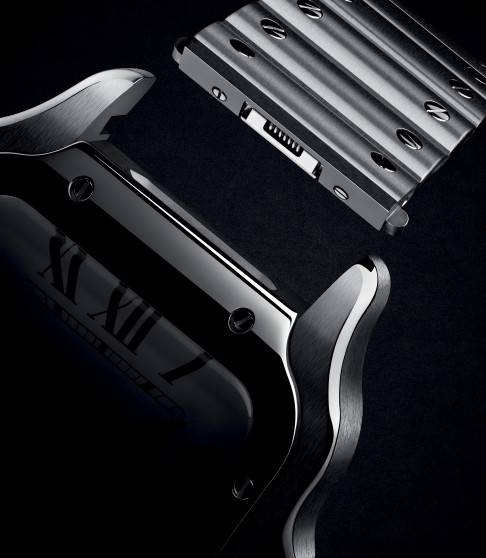
Santos de Cartier : When Trailblazers Take Flight
[Sponsored Article] A Pioneer is Born As the 20th century dawned, Paris, France emerged as an epicentre for innovation in a number of fields, including architecture, engineering and fine art. Chief among these was the burgeoning industry of aeronautics, led by a visionary named Alberto Santos-Dumont.
[Sponsored Article]
A Pioneer is Born
As the 20th century dawned, Paris, France emerged as an epicentre for innovation in a number of fields, including architecture, engineering and fine art. Chief among these was the burgeoning industry of aeronautics, led by a visionary named Alberto Santos-Dumont.
Nothing is Impossible
Today, Santos-Dumont is a national hero in his native Brazil, where countless roads, schools, and airports bear his name. The small town of Palmira, where he was born in 1873, was renamed in his honour. There is even a Santos-Dumont crater on the moon.
The son of a French engineer, Santos-Dumont displayed a passion for machinery and inventions from a very young age. He first travelled to Paris in 1891, embedding himself within this vibrant community of creative thinkers. There he pursued his newfound passion for manned flight.
Santos-Dumont set to work developing lighter-than-air craft capable of transporting men through the air. In October 1901 he won the Deutsch de la Meurthe Prize, by successfully piloting an airship from Parc Saint-Cloud to the Eiffel Tower and back in under 30 minutes.
Now an international celebrity and unlikely fashion icon, he shifted his attention to more robust aircraft. His monoplane – La Demoiselle – became the world’s first mass-produced airplane. Santos-Dumont went on to publish all his designs, so others might follow in his footsteps, pioneering the open source model in the process.
The aviator explained to his friend, Louis Cartier, his difficulty telling the time mid-flight. Fishing around for his pocket watch necessitated letting go of the aircraft’s controls, which was incredibly dangerous.
Inspired by this unique predicament, Cartier fashioned a new kind of timepiece, designed specifically to solve Santos-Dumont’s problem. In 1904, Cartier presented his friend with the very first men’s wristwatch, an inspired combination of form and function that sparked a horological revolution.

A Man of Connections
Cartier channelled his era’s pioneering advances in architecture and engineering into his wristwatch design. Deviating from the traditional circular design of the pocket watch, its elegant square with rounded corners was better suited to a man’s wrist, and instantly recalled Gustave Eiffel’s iconic landmark.
The Roman numerals, sapphire winding crown and minute rail-track of the clock face advanced the balance between practicality and conventional aesthetics, while the eight exposed screws along the bevel revealed an element of the watch’s construction hitherto concealed by watch makers.
First made public in 1911, the Santos de Cartier foregrounded function over form to a revolutionary degree, bringing devotees one step closer to the pioneering efforts of these artistic visionaries.

By the end of the First World War, the wristwatch had become a necessity and Cartier conceived a number of evocative models beloved the world over. In the 1970s, he updated the Santos de Cartier in gold and steel for a striking two-tone look. The traditional leather strap was replaced with an audacious steel bracelet, to capture the razzle dazzle of the disco era.
The Santos has become emblematic of the adventurous spirit that defined an era of technological breakthroughs, while evolving with the times to remain a game changer among wristwatches. After 40 years, Cartier has revitalised the Santos once again, incorporating ground-breaking mechanisms into its signature pared-down design.

A Legend Reborn
Retaining its original square shape, the new Santos pays respectful homage to classical Parisian geometry, while the screws, visible along the bezel and metal strap links, acknowledge the imposing steel structures of the period. The bezel has been redesigned to accentuate the sleeker lines of the case and strap, and measured and weighted to ensure a perfect fit and greater comfort.
The 2018 Santos boasts a pair of newly patented features that maintain the watch’s commitment to exploration and bold new visions. The strap remains the evolving focus of Cartier’s efforts, culminating in the QuickSwitch system. This one-touch mechanism, hidden under the strap, allows owners to switch from a gold or steel bracelet to an alligator or calfskin alternative in seconds. The Santos itself can now adapt to any occasion, mood or lifestyle.
The length of gold and steel bracelets can be adjusted without using additional tools, thanks to Cartier’s cutting edge SmartLink technology. Underneath each link is a hidden release, so they can be removed or added easily for a more secure and comfortable fit.
Anti-magnetic nickel phosphorous components in the escapement and movement mechanisms offer effective protection from any powerful magnetic fields the watch may be exposed to. The Santos is also water resistant up to 10 bar, while maintaining a minimal case thickness.

A Legacy Remembered
For over a century, the Santos de Cartier has maintained the same essential balance of form and function that conjured it into existence. Melding a spirit of adventure with a necessity for simplicity, this quintessential wristwatch continues to inspire – and be inspired by – those who dare to dream, and live to experience the world from a unique vantage point.

